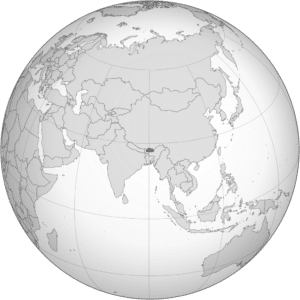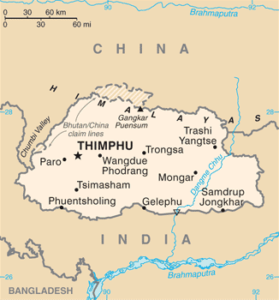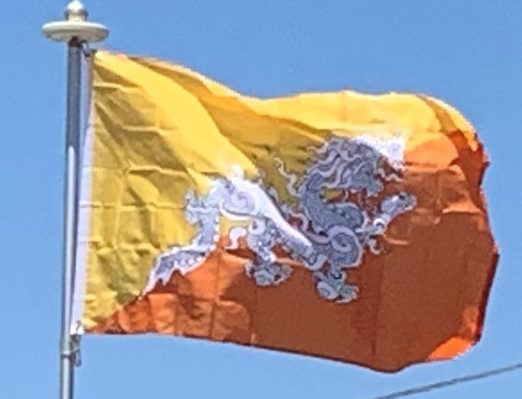Introduction:
Bhutan, officially the Kingdom of Bhutan, is a landlocked country in South Asia. Located in the Eastern Himalayas, it is bordered by the Tibetan Autonomous Region of China in the north, the Sikkim state of India and the Chumbi Valley of Tibet in the west, the Arunachal Pradesh state of India in the east, and the states of Assam and West Bengal in the south. Bhutan is geopolitically in South Asia and is the region’s second least populous nation after the Maldives. Thimphu is its capital and largest city, while Phuntsholing is its financial center.

The independence of Bhutan has endured for centuries and it has never been colonized in its history. Situated on the ancient Silk Road between Tibet, the Indian subcontinent and Southeast Asia, the Bhutanese state developed a distinct national identity based on Buddhism. Headed by a spiritual leader known as the Zhabdrung Rinpoche, the territory was composed of many fiefdoms and governed as a Buddhist theocracy. Following a civil war in the 19th century, the House of Wangchuck reunited the country and established relations with the British Empire. Bhutan fostered a strategic partnership with India during the rise of Chinese communism and has a disputed border with China. In 2008, Bhutan transitioned from an absolute monarchy to a constitutional monarchy and held the first election to the National Assembly of Bhutan. The National Assembly of Bhutan is part of the bicameral parliament of the Bhutanese democracy.
The country’s landscape ranges from lush subtropical plains in the south to the sub-alpine Himalayan mountains in the north, where there are peaks in excess of 23,000 feet. Gangkhar Puensum is the highest peak in Bhutan, and it may also be the highest unclimbed mountain in the world. The wildlife of Bhutan is notable for its diversity.
In South Asia, Bhutan ranks first in economic freedom, ease of doing business, and peace; and is the least corrupt country as of 2016. However, Bhutan continues to be a least developed country. Hydroelectricity accounts for the major share of its exports. The government is a parliamentary democracy; the head of state is the King of Bhutan, known as the “Dragon King.” Bhutan maintains diplomatic relations with 52 countries and the European Union, but does not have formal ties with the five permanent members of the United Nations Security Council. It is a member of the United Nations, SAARC, BIMSTEC and the Non-Aligned Movement. The Royal Bhutan Army maintains a close relationship with the Indian Armed Forces.

Bhutan is also notable for pioneering the concept of gross national happiness.
Etymology:
The precise etymology of “Bhutan” is unknown, although it is likely to derive from the Tibetan endonym “Bod” used for Tibet. Traditionally, it is taken to be a transcription of the Sanskrit Bhoṭa-anta “end of Tibet”, a reference to Bhutan’s position as the southern extremity of the Tibetan plateau and culture.
Since the 17th century the official name of Bhutan has been Druk yul (country of the Drukpa Lineage, the Dragon People, or the Land of the Thunder Dragon, a reference to the country’s dominant Buddhist sect) and Bhutan only appears in English-language official correspondence.
